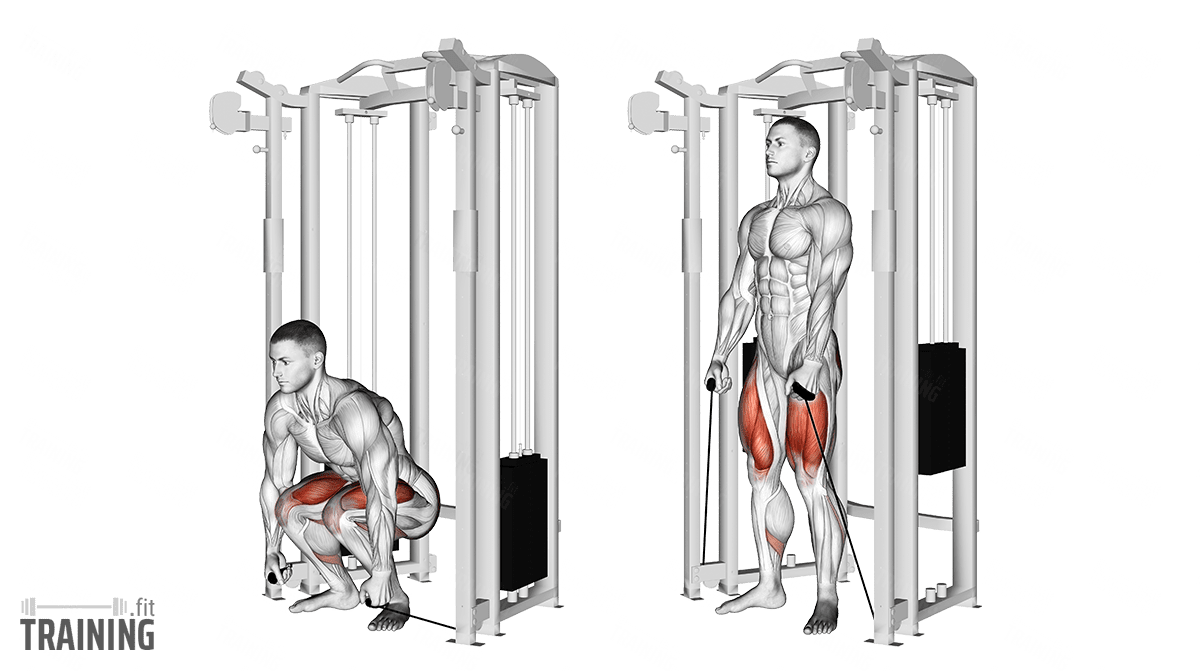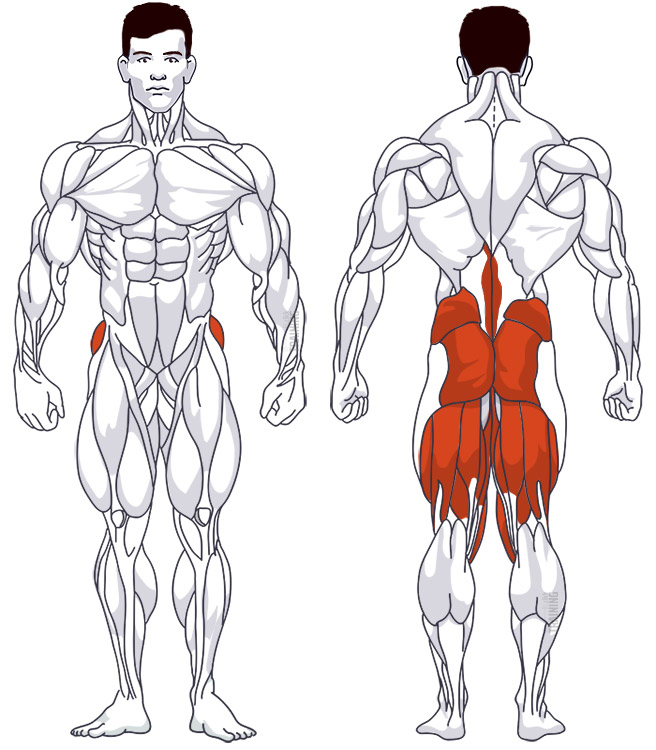Cable Deadlift
Compound exercise, Cable pullOverview

Main muscles
- Thigh: Thigh flexor
(Musculus biceps femoris) - Buttocks: Large gluteus maximus
(Musculus gluteus maximus) - Back: Back extensor
(Musculus erector spinae)
Cable Deadlift: Basics and alternatives

Involved main muscle groups:
Cable Deadlift
Cable deadlifts are a unique variation of the popular strength exercise. The movement sequence is basically the same despite using different training equipment: With your upper body leaning forward, you lift the weight on the cable tower and raise your upper body by straightening your legs and back.
This variation also works multiple muscle groups, making it a compound exercise. It can be performed as an alternative to the standard barbell deadlift. Just like with regular deadlifts, proper form is essential for a smooth, injury-free execution.
Other alternatives to cable deadlifts include dumbbell deadlift, resistance band deadlift, straight leg deadlift(with dumbbell) or sumo deadlift. For beginners, regular low weight deadlift or a machine exercise (such as back extension) is a good option to strengthen the lower back initially and prepare for heavier deadlifting.
Correct execution
As with barbell deadlifts, proper form is crucial for training success. Throughout the exercise, ensure your back is straight and not arched. If you struggle with this, try using a lower weight or strengthening your hips or lower back with back extensions first.
Only perform cable deadlifts if there are narrow cable pulley towers or machines that allow a narrow vertical guide for the cable and handle. If your gym only has wide cable towers, switch to another variation of the exercise.
Video tutorial
Step-by-step instructions
Attach the handles to the two lower mounts of the cable pull tower.
Stand shoulder-width apart in the tower and grab the two handles.
Squat down with your hips between your knees and head, not squatting too far. Keep your back straight and your lower back slightly arched. Look straight ahead, aligning your head with your spine and hips. Keep your back from arching and engage your core. This is the starting position.
Lift the weight with your arms extended by straightening your legs and your upper body. The raised position of the handles should vertically align with the starting position.
Finish the movement when you’ve slightly pushed your hips forward, are standing upright, and the handles are next to your hips. Be careful not to hyperextend your back. Hold this position for a few seconds.
Lower the weight in a controlled manner by bending your legs and torso, returning to the starting position.
Common mistakes
An arched back is a common issue, which can quickly cause pain. Make sure you perform each repetition as perfectly as possible. Your lower back should form a slight arch, your upper back should be straight, and your head should align with your hips.
Avoid positioning your hips too low at the start of the lift. Your hips should be between your knees and your head in height. Lower your hips only to lift the handles, not the weight.
Don’t yank the cables towards you or abruptly let go at the end of the lift. Ensure you maintain a smooth, controlled movement throughout the exercise.
For more guidance, check out the tips on regular barbell deadlift mistakes here to learn what should generally be avoided.